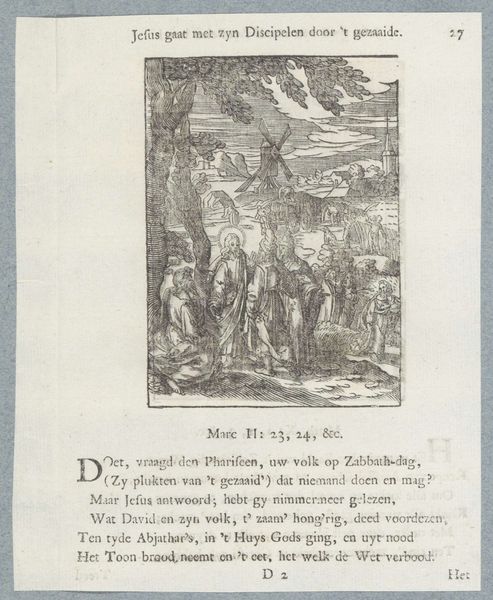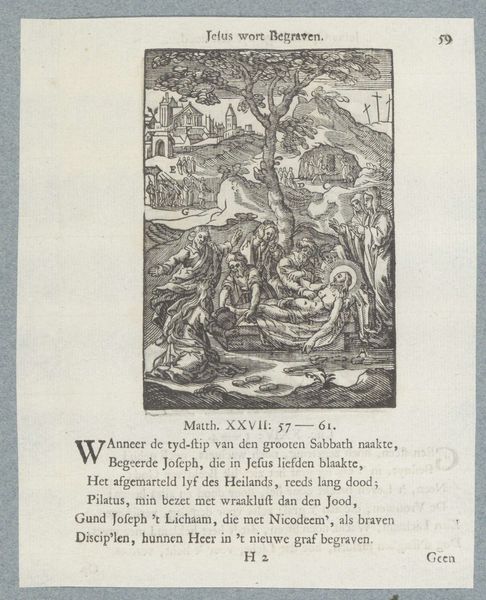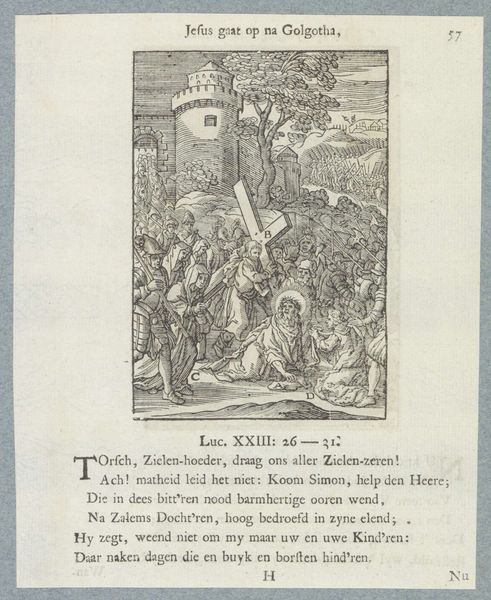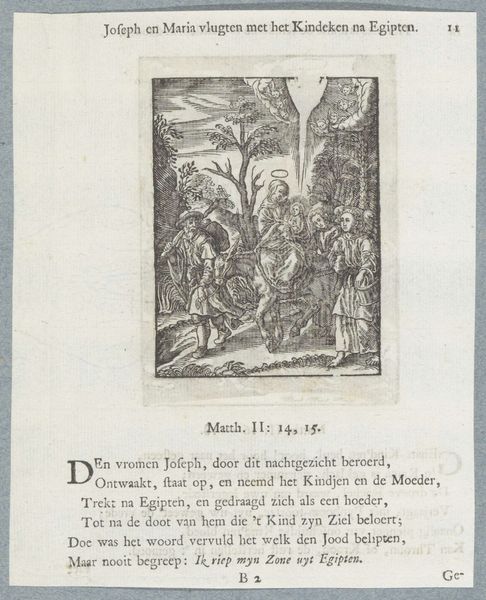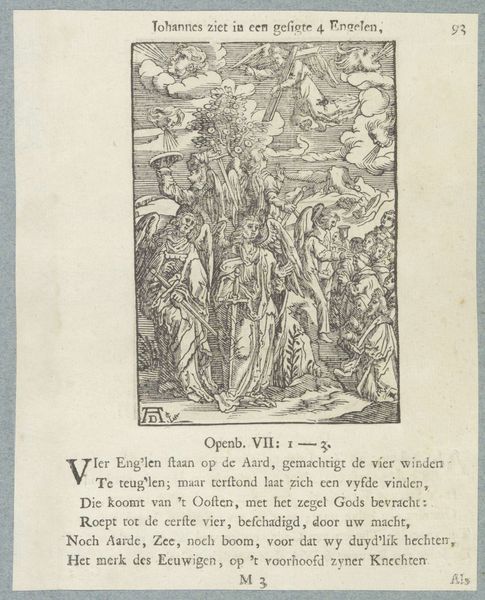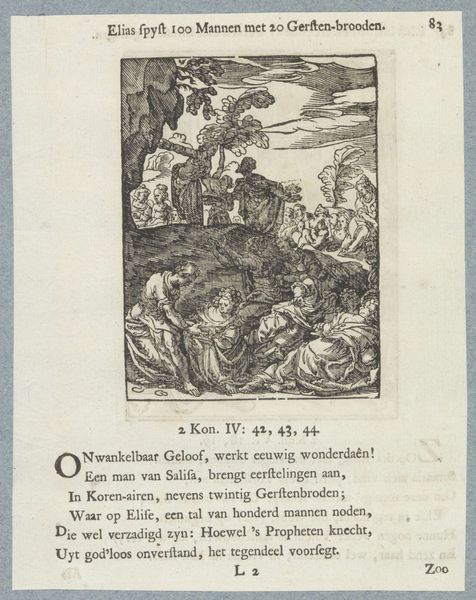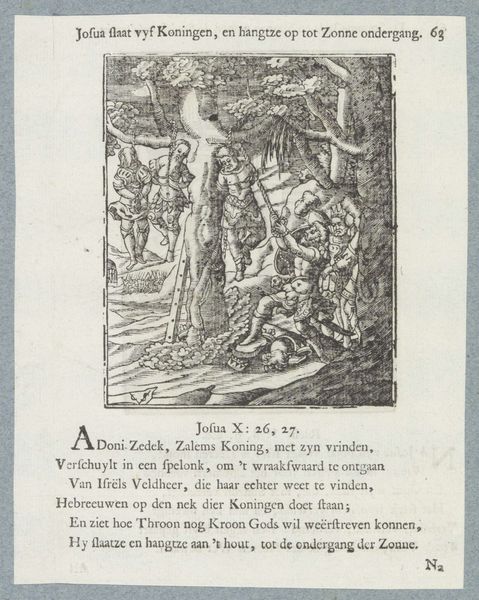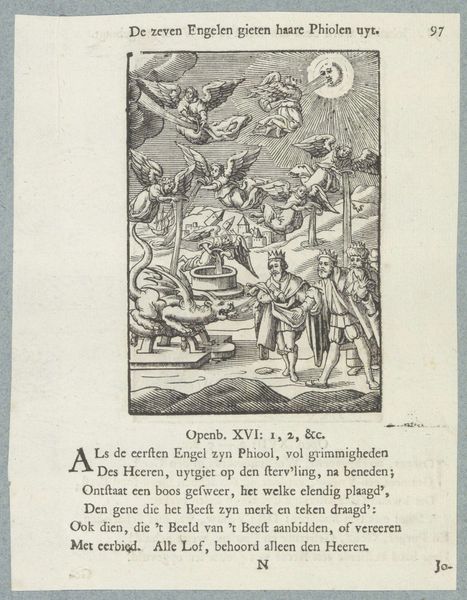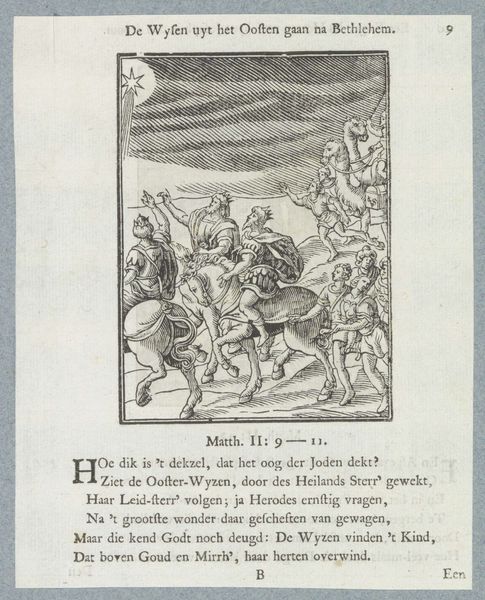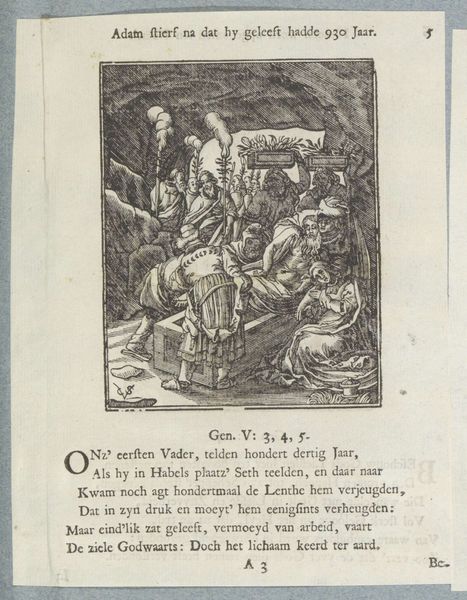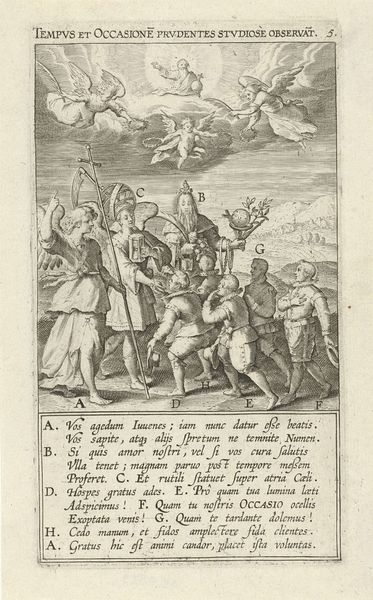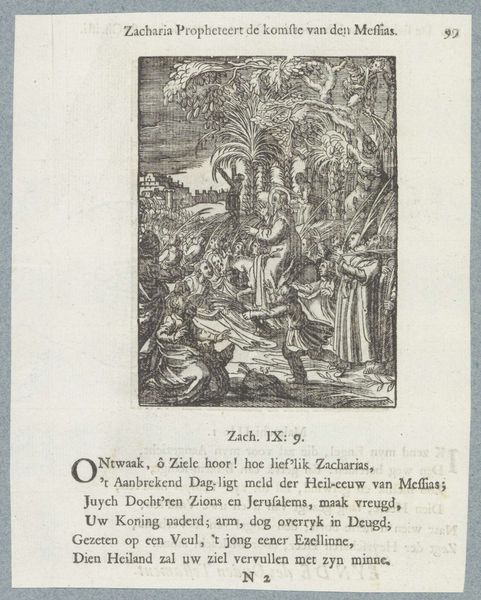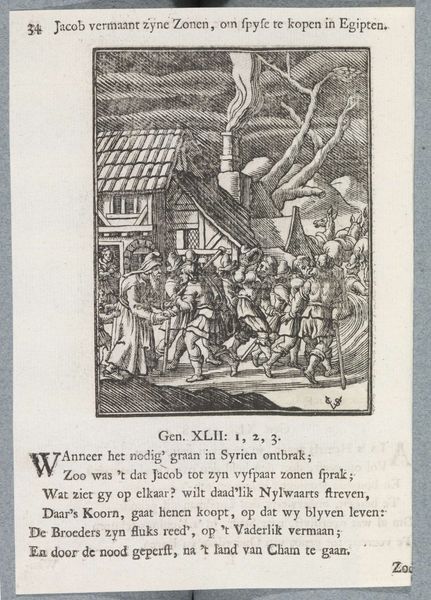
print, engraving
#
comic strip sketch
#
aged paper
#
narrative-art
#
baroque
# print
#
sketch book
#
hand drawn type
#
figuration
#
personal sketchbook
#
sketchwork
#
pen work
#
sketchbook drawing
#
history-painting
#
storyboard and sketchbook work
#
sketchbook art
#
engraving
Dimensions: height 111 mm, width 75 mm, height 170 mm, width 135 mm
Copyright: Rijks Museum: Open Domain
Curator: Here we have "The Four Horsemen of the Apocalypse," an engraving rendered between 1629 and 1740, attributed to Christoffel van Sichem II, a master of the Baroque style. What is your initial response to this turbulent scene? Editor: Chaos! My first thought is that the tightly packed composition really amplifies a sense of imminent doom, doesn’t it? The density of figures—human, angelic, and equine— all adds to this feeling. The bodies tumbling and twisting at the bottom feel so claustrophobic. Curator: Absolutely, the iconography of the horsemen is potent. You have Conquest, War, Famine, and Death—each carrying recognizable symbolic weight, wielding power over humanity. These aren’t just figures; they are the harbingers of societal collapse. Editor: It’s striking how consistently certain visual motifs reappear when societies grapple with widespread upheaval. Think about it: horses representing power, skeletal figures embodying mortality, and the use of implements of war – a kind of shorthand to describe the psychology around moments of deep precarity. I wonder, how might its original audience have perceived the role of printmaking itself, a technology that rapidly disseminated texts, and consequently beliefs? Curator: That is very relevant here. Print democratized access to potent imagery like this. While the narrative may seem like ancient history to contemporary eyes, consider its potential resonance within its specific historical timeframe: times of political and religious turmoil when interpretations of morality became powerful rallying tools. Looking closer at this particular depiction of divine judgment—its social impact must have been undeniable, it may have provided spiritual "explanations" to troubled masses in baroque Netherlands. Editor: A tangible reminder that our anxieties, though shaped by our immediate contexts, often tap into deeper archetypes, using a familiar symbolic visual vocabulary. What do you take away from the experience? Curator: I am struck by the endurance of narratives of societal transformation and the use of imagery like this in today’s societal upheaval, only transferred and remixed via various new media to explain— or often divide!–the population, which in many ways also speaks to a shared social need.
Comments
No comments
Be the first to comment and join the conversation on the ultimate creative platform.
